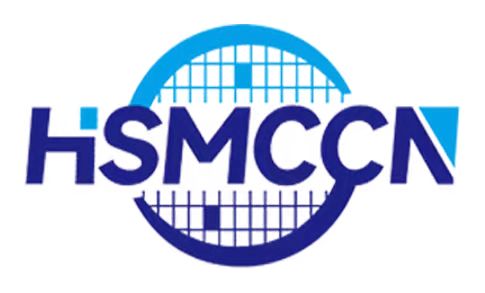
Privacy statement: Your privacy is very important to Us. Our company promises not to disclose your personal information to any external company with out your explicit permission.

As the global fashion landscape continues to evolve, the handbag manufacturing industry is experiencing a transformative phase driven by shifting consumer preferences, technological advancements, and an increasing focus on sustainability. In 2023, the dynamics of handbag production are being reshaped, presenting both exciting opportunities and significant challenges for manufacturers and brands alike.
One of the most notable trends in the handbag manufacturing industry is the rising demand for sustainable practices. Consumers are becoming more environmentally conscious, seeking products that align with their values. As a result, manufacturers are increasingly adopting eco-friendly materials, such as recycled plastics, organic cotton, and plant-based leathers. Brands like Stella McCartney and Veja have pioneered sustainable production methods, emphasizing the importance of transparency in the supply chain.
Moreover, many manufacturers are investing in technologies that minimize waste during production. For instance, zero-waste patterns and 3D printing techniques are gaining traction, allowing brands to create handbags with reduced environmental impact. These innovations not only appeal to eco-conscious consumers but also help manufacturers lower costs and improve efficiency.
The integration of technology into the handbag manufacturing process is another key trend. Automation and artificial intelligence (AI) are revolutionizing traditional manufacturing methods, enabling faster production times and higher quality control. Robotics are being employed in tasks such as cutting, stitching, and assembling, reducing labor costs and minimizing human error.
Additionally, digital tools such as computer-aided design (CAD) software are allowing designers to create and modify handbag prototypes with greater ease. This innovation accelerates the design process and enhances collaboration between designers and manufacturers. As a result, brands can bring their products to market more quickly, responding to trends and consumer demands in real-time.
Customization is becoming a significant trend in the handbag manufacturing industry, driven by consumer desire for unique, personalized products. Many manufacturers are offering bespoke options, allowing customers to choose materials, colors, and designs that reflect their individual styles. This trend not only enhances customer satisfaction but also fosters brand loyalty.
To facilitate customization, manufacturers are investing in flexible production techniques that allow for smaller batch sizes. This approach reduces excess inventory and enables brands to cater to specific customer preferences. Companies that successfully implement customization strategies are likely to stand out in a crowded market.
Despite the positive trends, the handbag manufacturing industry faces several challenges that must be addressed:
Supply Chain Disruptions
The aftermath of the COVID-19 pandemic has exposed vulnerabilities in global supply chains. Manufacturers are grappling with delays in sourcing raw materials and transportation issues, leading to production bottlenecks. To mitigate these challenges, many brands are exploring localized production and diversifying their supplier networks.
Rising Costs
The increasing cost of raw materials, particularly sustainable options, poses a significant challenge for manufacturers. As demand for eco-friendly materials rises, prices have surged, impacting profit margins. Brands must carefully balance the cost of sustainable practices with the need to remain competitive in the market.
Meeting Consumer Expectations
With the rapid pace of fashion trends, manufacturers must be agile and responsive to changing consumer preferences. This requires ongoing market research and a commitment to innovation. Brands that fail to keep up with evolving demands risk losing relevance in an increasingly competitive landscape.
The handbag manufacturing industry is also witnessing innovative solutions that enhance production efficiency and product quality:
Digital Twin Technology
Digital twin technology, which creates a virtual representation of physical products, is being adopted by manufacturers to optimize production processes. By simulating various scenarios, manufacturers can identify inefficiencies and make data-driven decisions to improve workflows.
Sustainable Materials Research
Ongoing research into sustainable materials is leading to the development of new, innovative options for handbag production. For example, lab-grown leather and bio-based materials are emerging as viable alternatives to traditional leather, offering eco-friendly choices without sacrificing quality.
Enhanced Quality Control
Manufacturers are increasingly using AI and machine learning to enhance quality control processes. Automated systems can identify defects in materials and finished products more accurately than human inspectors, ensuring higher standards of quality and consistency.
The handbag manufacturing industry is at a pivotal moment, shaped by sustainability, technological innovation, and changing consumer preferences. As brands navigate the complexities of modern production, those that prioritize eco-friendly practices, embrace digital transformation, and adapt to market trends will thrive. While challenges such as supply chain disruptions and rising costs persist, the industry's commitment to innovation and quality will continue to drive its evolution. As we look to the future, the handbag manufacturing sector is poised to redefine its role in the fashion world, offering consumers stylish and sustainable options that reflect their values and lifestyles.

Privacy statement: Your privacy is very important to Us. Our company promises not to disclose your personal information to any external company with out your explicit permission.

Fill in more information so that we can get in touch with you faster
Privacy statement: Your privacy is very important to Us. Our company promises not to disclose your personal information to any external company with out your explicit permission.